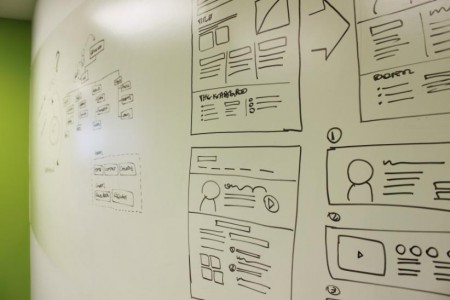 In this, the last installment of our three-part series, I’ll explain the final stage in our process: action.
In this, the last installment of our three-part series, I’ll explain the final stage in our process: action.
My name is Charles Sue-Wah-Sing and I head our design practice here at Delvinia. I work closely with the practice heads and team leads to deliver the final designs and execution on client projects.
It’s time to take action!
At Delvinia, our clients look to us to provide guidance beyond creating attractive web pages to market their latest product offering. In fact, we’ve evolved our practice to demonstrate to our clients the potential of innovation in areas of their business they may never have considered before.
Everything we interact with in our day-to-day lives has been designed by a team of business stakeholders, researchers, engineers, designers, and hopefully, end customers. A successful digital strategy and design solves a business need at the same time that it meets a new or existing customer need.
During the action stage we focus on rapid concept development. Concepts are reviewed, validated and refined to a level of completeness where the business objective is satisfied. The right concept goes on to the next level of implementation.
In a customer-centric process, it is essential for the customer to be represented in the early phases. That is why our process always begins with some form of insights gathering activity. When we engage in direct dialogue with the customer (as we did in the insurance example in Part One), then we become the customers ourselves, travelling through the path to purchase and identifying pain points along the way.
Why does this matter?
The knowledge you gain about your customer can shape how you design your next product or customer experience. Combined with other principles like behavioural economics, human factors and usability, we can design digital products, services and utilities that customers are motivated to use and that have the longevity to see a positive return on investment.
For the national retailer mentioned in the first two posts we designed a vision of what a customer-centric mobile first experience could look like. Going the next level deeper than strategy we started to conceive concepts for mobile tools and how they could integrate with digital displays and traditional media. We packaged our ideas in a series of customer narratives, supporting customer journey maps and a refined marketing funnel with reset objectives and tactics.
Delvinia’s design team routinely actions on customer-centric design thinking, usability, UX design and trends in digital technology. Our team is involved from the very early stages to help uncover opportunities for innovative thinking, to develop concepts to present to business stakeholders for validation, and finally, to take the design to the final digital product. We uphold the needs of the customer in every project we complete because we know that a successful design is one that serves the business and the consumer equally well.
If you missed Part One and Two of this series, you can read Amy Sullivan’s post on Insights here and Rosalina Lin-Allen’s post on Strategy here.